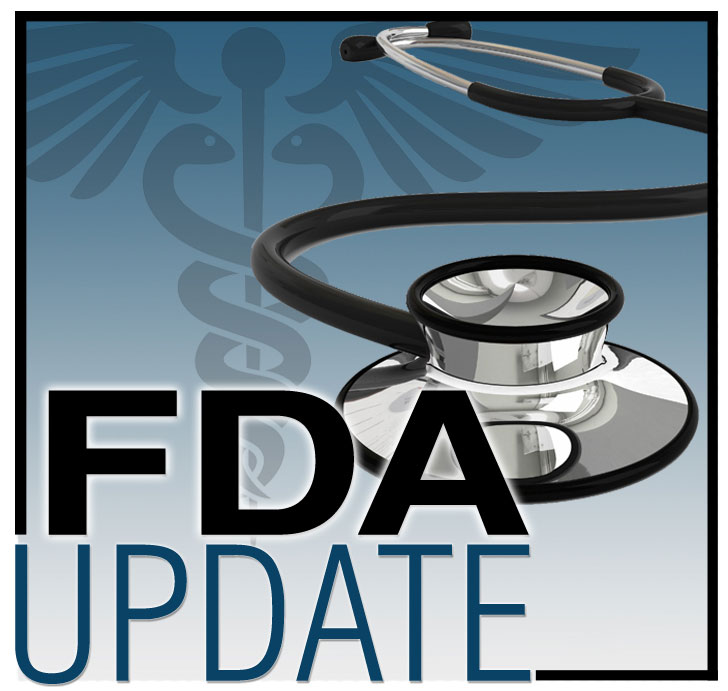- U.S. Food and Drug Administration (FDA) (https://voice.ons.org/topic/us-food-and-drug-administration-fda)
- Oncology Drug Research (https://voice.ons.org/topic/oncology-drug-research)
- Prostate Cancer (https://voice.ons.org/topic/prostate-cancer)
- Clinical Practice (https://voice.ons.org/topic/clinical-practice)
FDA Approves Lutetium Lu 177 Vipivotide Tetraxetan for Metastatic Castration-Resistant Prostate Cancer
On March 23, 2022, the U.S. Food and Drug Administration (FDA) approved (https://www.fda.gov/drugs/resources-information-approved-drugs/fda-approves-pluvicto-metastatic-castration-resistant-prostate-cancer) lutetium lu 177 vipivotide tetraxetan (Pluvicto™) for adult patients with prostate-specific membrane antigen (PSMA)-positive metastatic castration-resistant prostate cancer (mCRPC) who have been treated with androgen receptor (AR)–pathway inhibition and taxane-based chemotherapy.

FDA also approved gallium ga 68 gozetotide (Locametz®), a radioactive diagnostic agent for positron emission tomography (PET) of PSMA-positive lesions, including its use in the selection of patients with metastatic prostate cancer for whom lutetium lu 177 vipivotide tetraxetan PSMA-directed therapy may be indicated. Gallium ga 68 gozetotide is the first radioactive diagnostic agent approved for patient selection in the use of a radioligand therapeutic agent.
Efficacy was evaluated in a randomized 2:1, multicenter, open-label trial (VISION; NCT03511664) that evaluated lutetium lu 177 vipivotide tetraxetan plus best standard of care (BSoC) (n = 551) or BSoC alone (n = 280) in men with progressive, PSMA-positive mCRPC.
Patients with previously treated mCRPC were selected for treatment with lutetium lu 177 vipivotide tetraxetan using gallium ga 68 gozetotide or another approved PSMA-11 imaging agent based on PSMA expression in tumors. PSMA-positive mCRPC was defined as having at least one tumor lesion with gallium ga 68 gozetotide uptake greater than normal liver. Patients were excluded from enrollment if any lesions exceeding certain size criteria in the short axis had uptake less than or equal to uptake in normal liver.
All patients received a GnRH analog or had prior bilateral orchiectomy. Patients were required to have received at least one AR pathway inhibitor, and one or two prior taxane-based chemotherapy regimens. Patients received lutetium lu 177 vipivotide tetraxetan 7.4 GBq (200 mCi) every six weeks for up to six doses plus BSoC or BSoC alone.
Patients in the trial demonstrated a statistically significant improvement in the primary endpoints of overall survival (OS) and radiographic progression-free survival (rPFS). OS Hazard ratio was 0.62 (95% CI = 0.52, 0.74; p < 0.001) for lutetium lu 177 vipivotide tetraxetan plus BSoC versus BSoC. Median OS was 15.3 months (95% CI = 14.2, 16.9) in the lutetium lu 177 vipivotide tetraxetan plus BSoC arm and 11.3 months (95% CI = 9.8, 13.5) in the BSoC arm. Interpretation of the magnitude of the rPFS effect was limited because of a high degree of censoring from early drop out in the control arm.
The most common adverse reactions reported in 20% or more of patients receiving lutetium lu 177 vipivotide tetraxetan were fatigue, dry mouth, nausea, anemia, decreased appetite, and constipation. The most common laboratory abnormalities that worsened from baseline in 30% or more of patients receiving lutetium Lu 177 vipivotide tetraxetan were decreased lymphocytes, decreased hemoglobin, decreased leukocytes, decreased platelets, decreased calcium, and decreased sodium. Treatment with lutetium Lu 177 vipivotide tetraxetan may result in radiation exposure, myelosuppression, and renal toxicity. The safety follow-up duration in the trial was not sufficient to capture late radiation-associated toxicities.
The recommended lutetium lu 177 vipivotide tetraxetan dose is 7.4 GBq (200 mCi) via IV every six weeks for up to six doses, or until a patient experiences disease progression or unacceptable toxicity.
The review used the Assessment Aid (https://www.fda.gov/about-fda/oncology-center-excellence/assessment-aid), a voluntary submission from the applicant to facilitate FDA’s assessment.
The application was granted priority review and breakthrough designation. A description of FDA expedited programs is in the Guidance for Industry—Expedited Programs for Serious Conditions—Drugs and Biologics (https://www.fda.gov/regulatory-information/search-fda-guidance-documents/expedited-programs-serious-conditions-drugs-and-biologics).
Healthcare professionals should report all serious adverse events they suspect are associated with the use of any medicine and device to FDA’s MedWatch Reporting System (https://www.accessdata.fda.gov/scripts/medwatch/index.cfm) or by calling 800-FDA-1088.
For assistance with single-patient investigational new drug applications for oncology products, healthcare professionals may contact OCE’s Project Facilitate (mailto:OCE’s%20Project%20Facilitate) at 240-402-0004 or email OncProjectFacilitate@fda.hhs.gov (mailto:OncProjectFacilitate@fda.hhs.gov).
